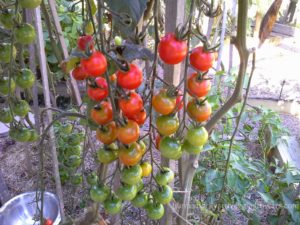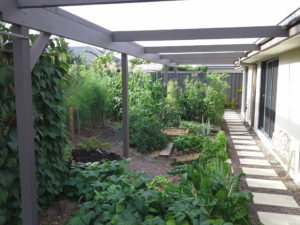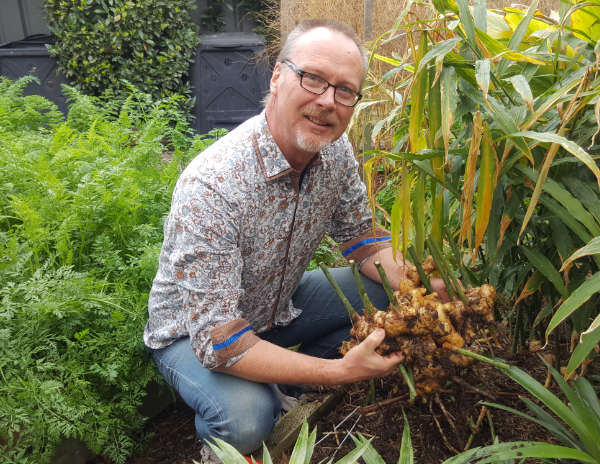If you want to get consistently good harvests of vegetables from your garden there are a couple of rules that you have to abide by. My number one rule is the need to plan. I reckon it is smart to spend time working on your garden without even getting dirt under your fingernails.
What planning is all about for me is my attempt to maximise the harvests I get from my patch and a way to keep a steady supply of fresh vegetables ready for the dinner table. Without planning I would not have a chance at all. It takes me a couple of sessions to do the planning but I do believe that it is well worth the effort. This important task is accomplished during the winter months when there is not as much to do in the garden. I plan an entire year, but it is always necessary to leave room to tweak it a bit over the Christmas period.
There are six things I always have at my fingertips to make sure that the planning session is as productive as it could be, they include:
1. A sketch of your garden layout – you need to know what space you have. I have 15 beds of various shapes and sizes available for planting each year.
2. Previous years planting plans – definitely a must have. Having a couple of seasons of history helps me to continue the habit of practicing good crop rotation. I find that if I develop a program of good crop rotation it is good for harvests and good for the soil. If you don’t have a history or you are beginning a new patch of vegetables it’s a great time to start keeping a record of what you plant where and when.
3. Previous crop notes – I always try to have a record of what crops grew well and when I planted them, I want to be able to repeat what worked well. I reckon that I stand a great chance of repeating the result. Same goes for crop failures - I want to avoid the stuff-ups!
4. A list of desirables – be brave, every year try something new that you have never grown before. Develop an adventurous spirit. Last year I tried Fennel and Turmeric and they were great, good enough to be added into the mix again this year. The year before I grew turnips and decided that my mother is still wrong, I still don’t like them. This year celeriac and kohlrabi is on the agenda.
5. A list of undesirables – yep if you don’t like brussel sprouts, don’t plant them. Or if you have a generous friend that always grows too many pumpkins, consider throwing in a couple of extra zucchini and plan to swap them.
6. A cup of coffee – yep, it really assists in the thinking process. This beverage is optional or it can be substituted for your own particular vice.
The result of my current thinking and planning:
Bed 1 – Currently has carrots growing in it until October. This will be followed by a green crop and in November I will plant sweet potatoes ready for harvest in May.
Bed 2 – Peas are growing happily until August. Butternut pumpkins, cucumbers and zucchini are next and in February I will put in salad greens.
Bed 3 – This is my asparagus bed. It has been happily growing for 4 years now and there are many more years of harvests to come in this spot.
Bed 4 – Currently picking broccoli and will continue to do so for a couple of more weeks. I will chuck in a quick green crop of broad beans as a green manure crop and then I will plant tomatoes in early September followed by salad greens in March.
Bed 5 – Cabbages and cauliflowers are a couple of weeks away from harvest. September is potatoes followed by a green crop until broad beans get sown late April.
Bed 6 – Rhubarb and strawberries will be in this bed until next winter.

Bed 7 – Salad greens are growing nicely until August when I will fill it up with cherry tomatoes of all shapes and colours, depending on how the crop handles the summer heat and humidity will determine when I pull them out and plant salad greens.
Bed 8 - Broccoli, cabbages and parsley until October. Summer salads are next, right through until autumn.
Bed 9 – Beetroot followed by sweet corn in September.
Bed 10 – Salad greens followed by sweet corn in October.
Bed 11 – Empty at the moment ready for potatoes to go in as soon as they arrive. Broccoli and cabbages will be planted in November.
Bed 12 – Currently has a broad bean green manure crop growing. Ginger and turmeric to be planted in September but there will be space for any first time veggie trials in this spot.
Bed 13 – Salad greens currently growing. Ready for bush beans in September and carrots in March.
Bed 14 – Broad beans will continue to grow nicely until October. Next is the third planting of sweet corn in late October followed by cabbages and broccoli in March.
Bed 15 - Garlic is currently in place and will be ready in November. Late November will see the fourth and final batch of sweet corn. Snow and snap peas will be sown in March.
I refer a lot to salad greens in this list. What I am referring to is veggies that are quick to grow and plants that I can eat leaves from. Lettuce, spinach, silver-beet, basil, coriander, spring onions, rocket, cress, radish, or parsley would all fit into this category for me.
So there it is. All of my secrets laid bare for all to see. If you have never scheduled like this before, have a go - it will improve your cropping.
]]>Looking for more help?
Find out more about our services including garden advice, setup and design. Available within a 50km radius of Newcastle.






